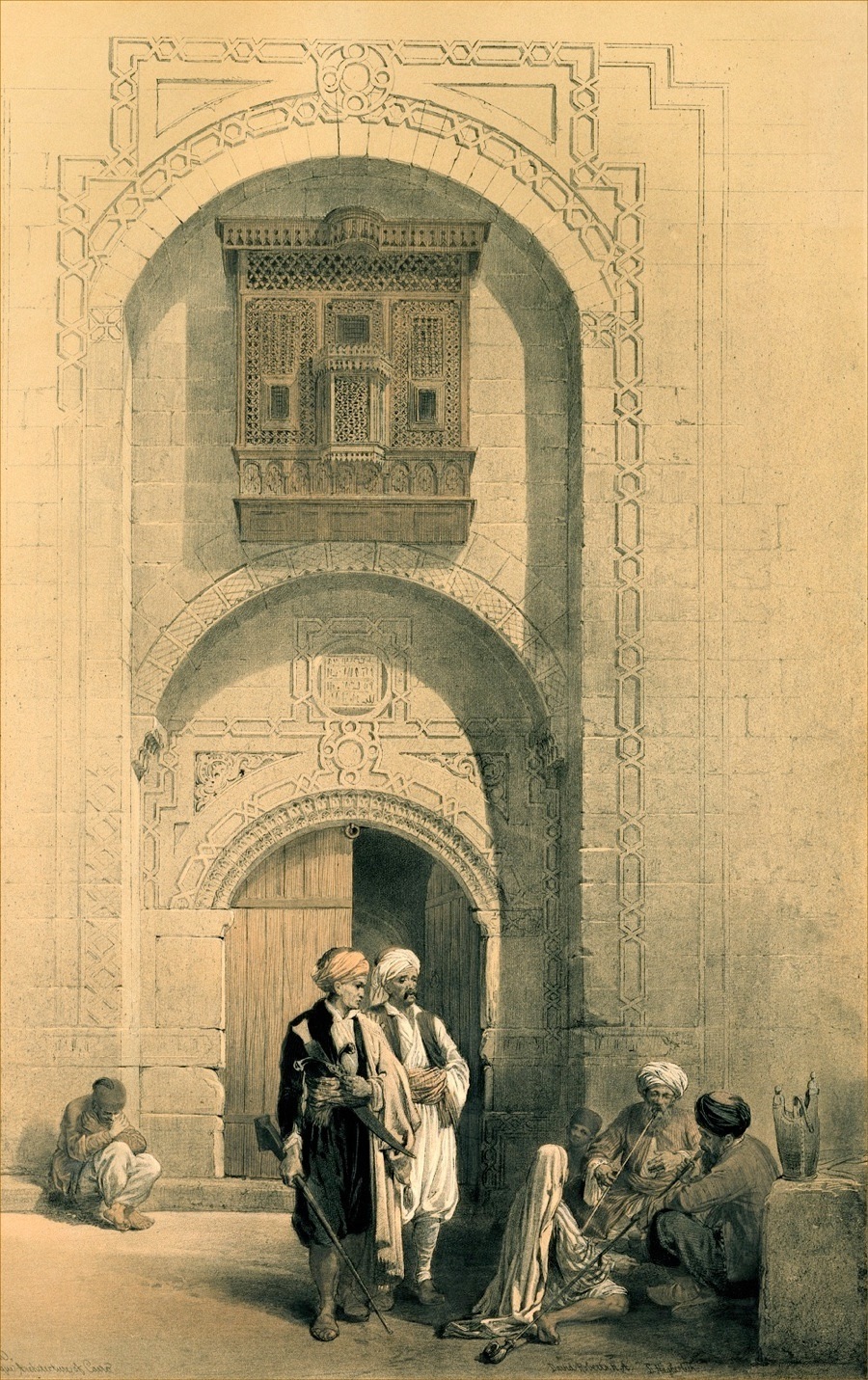ENTRANCE TO A PRIVATE MANSION, CAIRO
MR. Lane, in his "modern Egyptians," mentions the peculiar character of the private houses of their metropolis as deserving particular description, and he gives a very characteristic woodcut of a narrow street, which, he says, is wider than usual, where the projecting windows so overhang as effectually to exclude the sun. From the foundation to the ground-floor the walls are cased with a yellowish-coloured stone, and the alternate courses, as seen in the mosques, are also often coloured red and white. The first-floor is commonly carried out on corbels, and the windows projected from the rooms.
There is a general style in the architectural arrangements to the entrances of the private houses in Cairo. The door is frequently ornamented; and generally in compartments, with sometimes inscriptions, such as, "He (i.e. God) is the Creator everlasting;" these are usually in white or black characters. Often, there are corresponding compartments of the same form, but variously coloured; the remainder of the door is generally green, though it be the sacred colour of the Prophet. The door have iron knockers and wooden locks: these are very secure, for, by means of a simple and efficient arrangement of wires, they are not dissimilar in principle to our Bramah's locks. A mounting stone is also often seen by the doors of private house. Before entering even the poorest houses, is is usual for the visitors to utter, often at the top of their voices, certain sentences, in order to give the females, who may be busy in their domestic avocations, time to veil or cover their faces. Without this mark of decorum, no one would think of entering the most humble dwelling.
The doorways are generally arched with merely the segment of a circle, and often with beautiful arabesque decorations and traceries around the arch and in the spandrels within the rich mouldings which bound the portico. In the example drawn by Mr. Roberts a second arch, and even a third, rises above the door; and within between two of these is a projecting latticed window, adapted for observation by the ladies and others within, but perfectly concealing them from the passers-by in the street. These windows are sometimes, in the houses of the richer inhabitants, glazed inside, giving free access to the air at all times. The framework of the lattice, formed of turned wood, is generally fixed, and though often painted, it is more frequently left the natural colour of the wood. The external appearance of these latticed windows is one of the most striking characteristics of Oriental domestic architecture.
Lane's Modern Egyptians.
Roberts's Journal.
Lane's Modern Egyptians.
Roberts's Journal.


